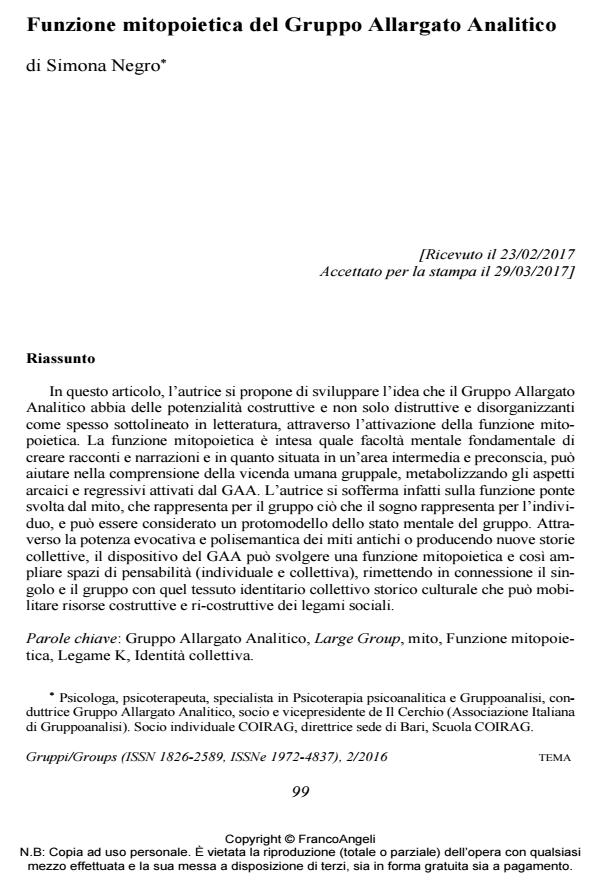Mythopoetic function of the Analytical Large Group
Journal title GRUPPI
Author/s Simona Negro
Publishing Year 2017 Issue 2016/2
Language Italian Pages 13 P. 99-111 File size 177 KB
DOI 10.3280/GRU2016-002009
DOI is like a bar code for intellectual property: to have more infomation
click here
Below, you can see the article first page
If you want to buy this article in PDF format, you can do it, following the instructions to buy download credits

FrancoAngeli is member of Publishers International Linking Association, Inc (PILA), a not-for-profit association which run the CrossRef service enabling links to and from online scholarly content.
In this article the author intends to investigate the idea that the "Analytic Large Group" has constructive features and not only destructive and disorganizing ones, as often highlighted in the literature. For this purpose a key role is offered by the activation of its mythopoetic function. The mythopoetic function is the essential mental capacity of creating tales and - because of its intermediate and preconscious positioning - it can support the group experience’s understanding through-out the metabolization of the archaic and regressive Analytic Large Group’s dimensions. Indeed the author think over the bridging role carried out by the myth, that has the same meaning for the group as the dream for the individual and there-fore, we can consider it as a protomodel of the Group’s state of mind. The Analytic Large Group setting can play a mythopoetic role expanding the room for both individual and collective thinking thanks to the evocative and polysemous power of ancient myths or by generating new collective stories; it reconnects the individual and the group with the historical, cultural and collective representation of identity bringing out the social ties’ constructive and reconstructive resources.
Keywords: Analytic Large Group, Large Group, Myth, Mithopoetic function, K bond (link), Collective identity.
Simona Negro, Funzione mitopoietica del Gruppo Allargato Analitico in "GRUPPI" 2/2016, pp 99-111, DOI: 10.3280/GRU2016-002009